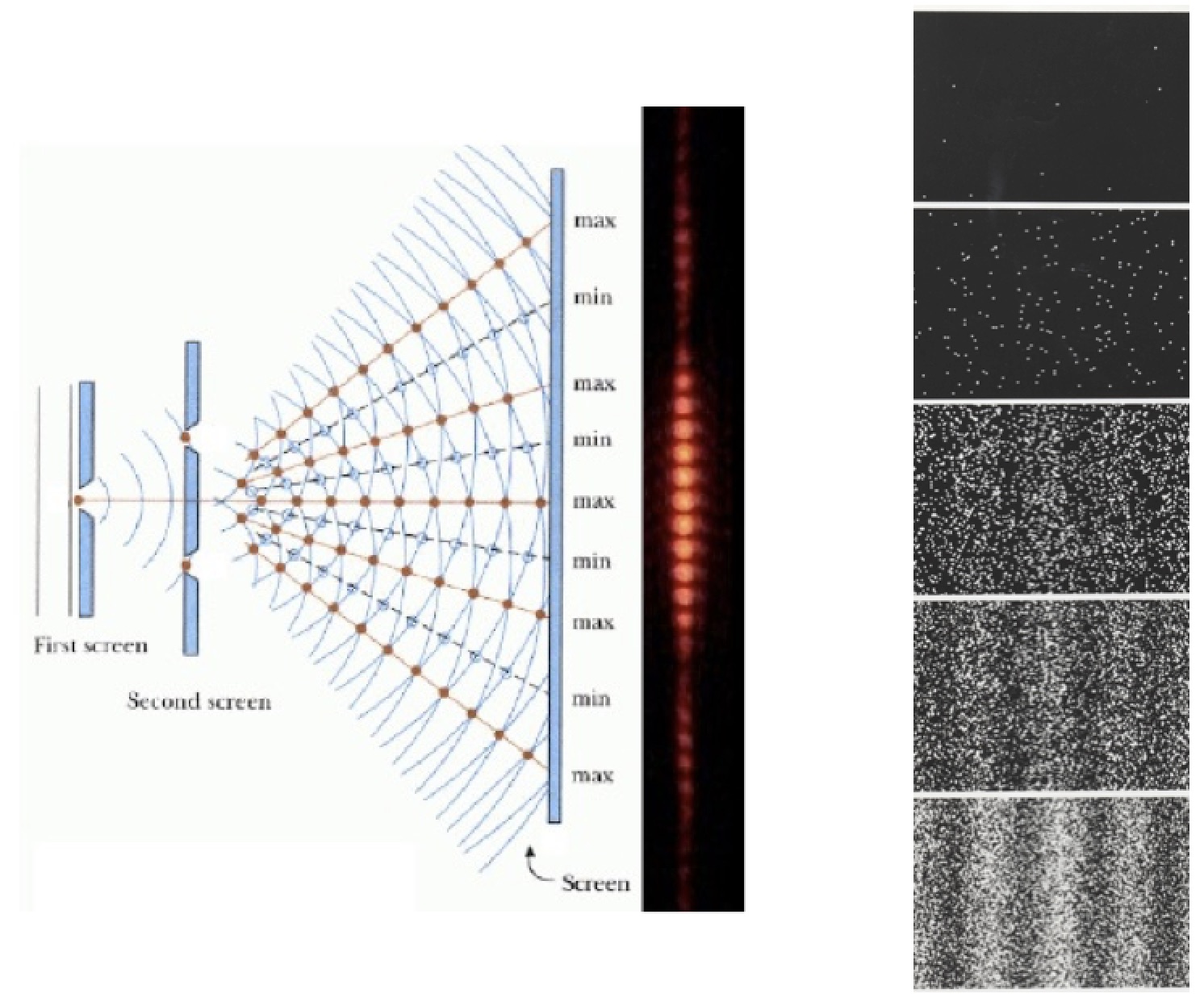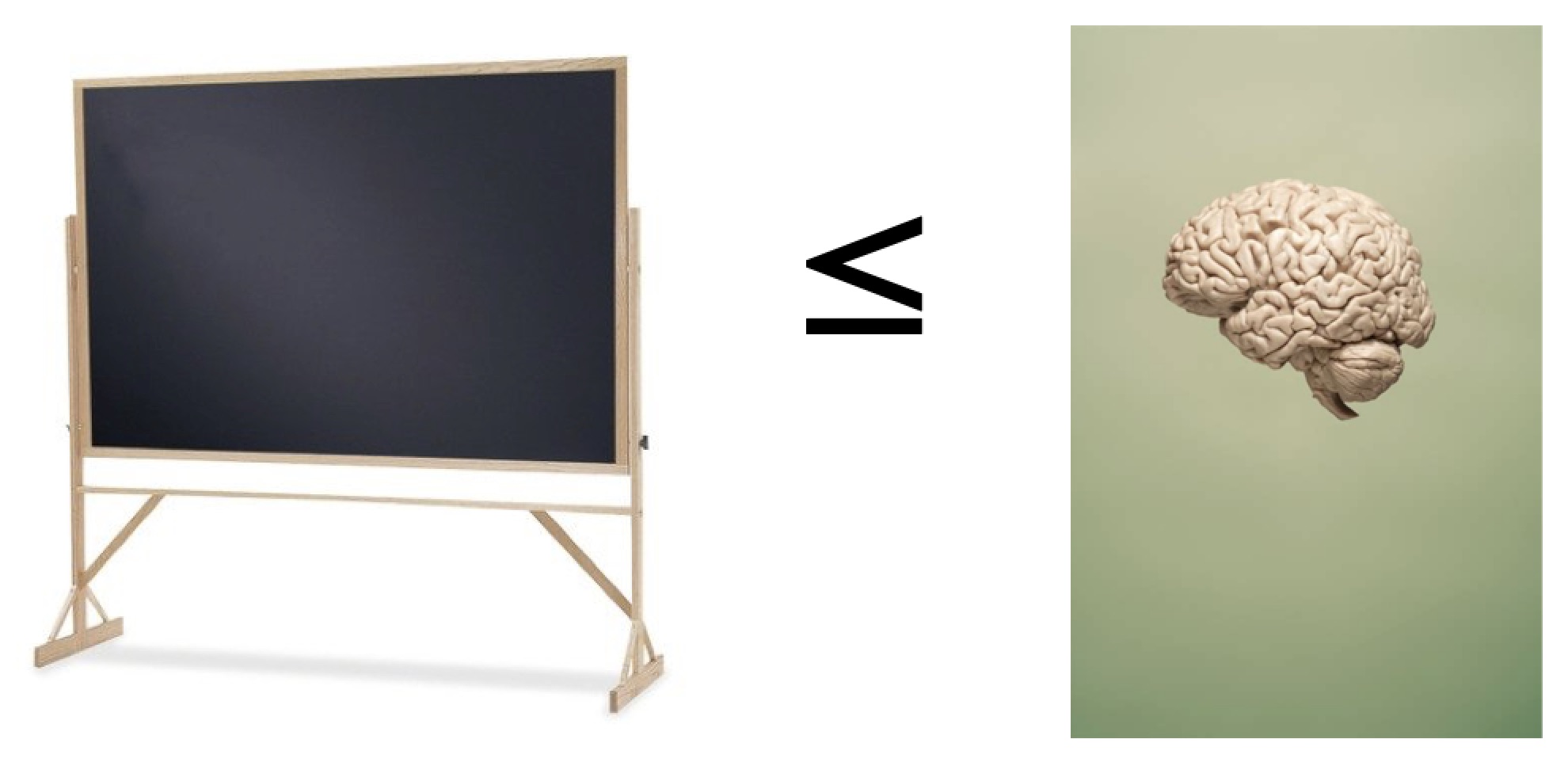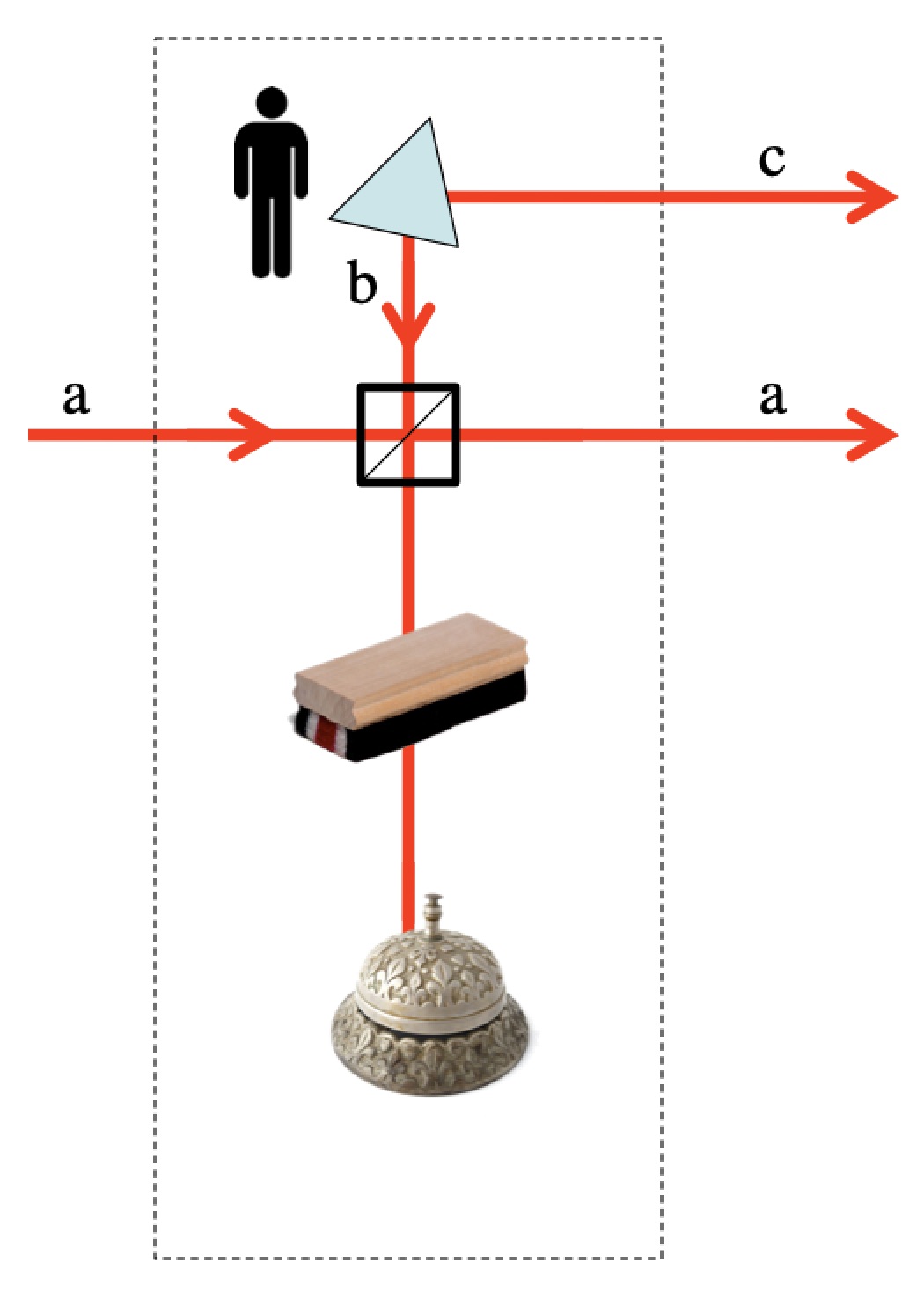The original question was: I find the double slit experiment super interesting and have lots of questions about it. But here’s one.
What if the particles you send through the slits are conscious? You send them through without measuring anything, and see an interference pattern. Afterwards, can you ask them which slit they went through?
More generally, maybe someone far far away can somehow infer that I am in a superposition, eating chocolate and/or vanilla ice cream. Later on, could they come down here and tell me about it? And ask which one I thought I was eating?
Physicist: This is a beautiful question.
In the early 1800s Young first did his double slit experiment, showing that light is a wave; a fact that’s more interesting than mind blowing. That was fine until the early 1900s, when a compounding of theoretical issues and empirical evidence revealed that light is also particle, in that it only seems to interact in discrete “quantized” chunks; a combination of facts more confusing than mind blowing.
An extremely good question, upon learning that light behaves like a particle, is to repeat the double slit experiment, but keep the light intensity so low that only a single photon is present at a time. If the universe were sympathetic to the human plight or placed any value on the peaceful sleep of physicists, then the result of this experiment would be a transformation of the interference fringes into a pair of bumps, one for each slit, as the photons run out of other photons to interfere with.

Coherent light passing through a pair (or more) of slits generates patterns as the waves of light from the two slits “interfere” with each other. The exact same pattern persists even when only a single photon is allowed through at a time (although it takes longer for the pattern to be clearly visible, since it’s built up one dot at a time).
When we actually do this experiment, we find that the same pattern continues to show up. Evidently, each individual photon interferes with itself, as though it had gone though both slits; a realization that’s more mind blowing than anything else.
It’s this “superposition” property of photons that makes them fundamentally quantum and it’s responsible for interference. An individual photon can pass through both slits and, although we can’t witness both versions of the photon, we can infer that they both existed through the interference pattern their combination forms.
It turns out that if there’s any way whatsoever to figure out which slit the photon went through, even if you don’t bother to find out, then there is no interference pattern. If you know that the photon went through the left slit (and genuinely doesn’t matter how you know), then the pattern it follows impacting the screen will contain no contribution from the right slit.
For example, if you put perpendicular polarizers in front of the slits, then you can “mark” photons. If the left slit is vertically polarized and the right is horizontal, then there’s no interference between the slits; we see two bumps, each made up of light from a particular slit with a particular polarization. You don’t actually have to check the polarization of any photon; the fact that it’s possible to know for sure which slit the photon came from (by measuring it with a polarizer) means that the two paths are “distinguishable”.
If both slits have vertical polarizers, then all of the light is vertically polarized and there’s no way to tell which slit the photon came from. Since the polarization of the photons is independent of which slit they went through, we see interference fringes again: many bright spots, two slits. Notice that this means that the polarizers themselves don’t “damage” the state of the photons passong through. The interference patterns really are dependent on the distinguishability of the slits.
So this may actually answer the question. We can ask each photon which slit they just came from by measuring their polarization. When the polarization state of the photons is used to “mark” them, they “remember” which slit they went through and there is no interference pattern. When they “don’t remember”, then there is an interference pattern. The photon’s polarization is being used here as a “pointer state”, and it’s a good way to talk about “memory”.

The term “pointer state” refers to a physical system that physical records a measurement result. For example: the position of a thing that points.
This physical record is sometimes called a “pointer state”, referring to the actual, physical state of a pointer pointing at something.
Through out the 20th century we found that photons aren’t special. Electrons, entire atoms, molecules with thousands of atoms, everything that has ever been directly tested has demonstrated interference effects as well as particle-like behavior, just like light. In fact, with coherence times measured in minutes and entanglement established between continents, one begins to suspect that quantum mechanics may be the general rule. What if everything, including us, is a quantum system? What does it feel like to be in a superposition of eating chocolate and/or vanilla ice cream states?
In the “Wigner’s Friend” thought experiment, the Friend is asked to do some kind of quantum measurement, like opening Schrödinger’s Cat’s box, and then report the results to Wigner a little later. The question is, does Wigner’s Friend’s observation of the Cat “collapse” its state, or do the Friend and Cat end up in a superposition of states together, alive/relieved and dead/horrified?
Remarkably, we may be able to answer that question experimentally without mentioning consciousness more than just this once. We can talk about pointer states under the rather broad umbrella of “something that keeps a physical record of the result of a quantum measurement”, which includes conscious minds, trained dogs, chalkboards, particular arrangements of rocks, etc. A conscious human mind is remarkable. Fine. But all we need here is “a brain includes a physical record of events”. We can still feel superior, but for our purposes, the polarization state of a photon, a single qubit of information, is sufficient.

Brains are arguably better that chalkboards. But even though brains can think and love and consider qualia and generally be conscious, the only thing that minds do that’s important for pointer states is remembering stuff. Chalkboards can be used to “physically encode the result of a quantum measurement” just as well as a brain (or a rock), so they’re both good enough.
In “Experimental rejection of observer-independence in the quantum world” Wigner’s Friend is a clever device that measures and records the horizontal/vertical polarization of one photon onto another, using a combination of entangled photons, half and quarter wave plates, polarizing beam splitters, and single photon detectors (it was not easy). This Friend is sealed inside an “information proof” Lab, like the box containing Schrödinger’s Cat. The only record of the first photon’s state is the second photon, not some “Wigner’s Clipboard” left in the lab. Finally, Wigner’s Friend can alert the outside world that a measurement has been successfully done, without reporting the result.

a, an incoming photon in and unknown state, enters Wigner’s Lab. Wigner’s Friend measures the horizontal/vertical polarization of a by firing off two photons with the same polarization, b and c. The polarizing beam splitter always reflects horizontal light and always passes vertical. If a and b have the same polarization, then one photon will exit each branch of the beam splitter, either both vertical (and passing straight through) or both horizontal (and both reflected). In that case, a and c have the same polarization, a in its original state and c in the same state; photon c carries a physical record of the state of a. b is used to announce a successful measurement (a success is only counted when all three photons are detected, in their expected place). So a detection-and-record isn’t usually successful, but we can tell when it works.
This is a bit of a digression, so if you’re interested, you can read a more detailed digression into this experiment here or read the original paper here. Suffice it to say:
-Photon A goes into the Lab and gets measured in the horizontal/vertical direction, but is left undisturbed. Whether horizontal or vertical, or
, the state of A is verifiably the same before and after passing through the Lab.
-Photons A and C emerge from the Lab, where the polarization of C is a copy of the result of a vertical/horizontal meansurement on A. We can verify the output (say,two vertical states) given the input (say, one vertical state) easily.
.
-No other record of the state is kept. This experiment is shockingly clean: a verifiably accurate measurement of a photon is done, the one and only record of that result is written onto another single photon, and the two are sent on their way.
The question is, what happens to Wigner’s Friend, when he’s given a diagonally polarized photon
which is a equal superposition of vertical and horizontal polarization states? Remarkably, Wigner’s Friend (the second photon) enters a superposition of states as well.
This is a Bell state! It means that the original photon and the result of a measurement on it are entangled with each other. Bell states are demonstrably non-classical, very quantum mechanical, phenomena. Being in this Bell state means that, even though A and C are in a superposition of states, if one is later found to be, say, horizontal, then so will the other. Regardless of the result, Wigner’s Friend still did the measurment accurately and only saw the one result.
The original photon is still in a superposition of states, and so is the result of the measurement on it. It’s fairly simple to measure pairs of photons in the “Bell basis“, allowing us to tell the difference between and
which is the other diagonally polarized state.
Evidently, measurment doesn’t collapse states, it entangles them. The result of a measurement is not an objective thing! It can be in a superposition of states just like everything else. Assuming quantum laws are universal (they seem to be) and assuming we, our memories, are pointer states (it’s hard not to be), and assuming that it’s possible to “information isolate” people from each other (in the extreme, zero-information sense of the physical experiment), then we can describe what it would be like to be Wigner’s Friend.
Taking the photon experiment as guide, we’ll consider a perfectly-isolated Lab that includes an ice cream machine that dispenses either vanilla or chocolate depending on the result of a polarization measurement of a single incoming photon. We can feel confident that if we feed in a photon, then Wigner’s Friend will eat a superposition of flavors
. However, if you asked Wigner’s Friend what he experienced, he’d tell you an answer; either vanilla or chocolate, but not both. He doesn’t experience the superposition as anything strange.
In the last few years we’ve managed to establish entanglement between continents using intermediating satellites. With a huge effort, we could set up something like that between Earth and Mars. Here on Earth the result of measurements on these entangled pairs would be used for ice cream choices and on Mars, sheilded by the fact that information can’t travel faster than light, uses their entangled pairs to infer that people on Earth (the ice cream eater, at least) are in superpositions. This isn’t a useful trick. When you actually ask “what flavor did you get?”, you’ll get a direct, non-quantum answer. But technically, you could be confident that someone on the far end of your entangled pair is eating a superposition of flavors. Until you can talk to them. Even if you don’t.







17 Responses to Q: What if the particles in the double slit experiment were conscious? Could you ask them which slit they went through afterwards?